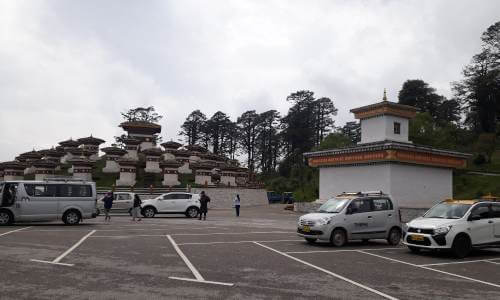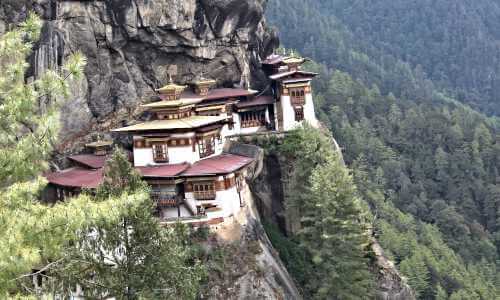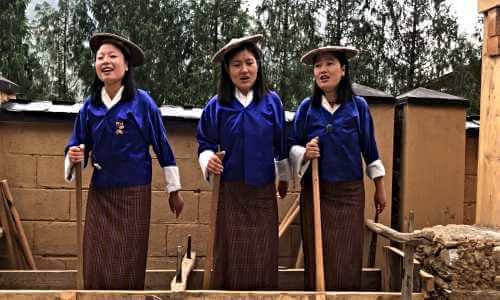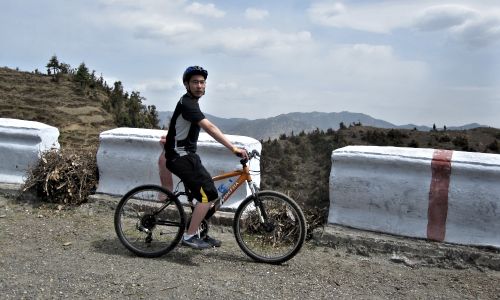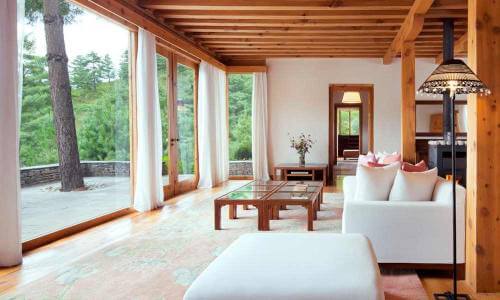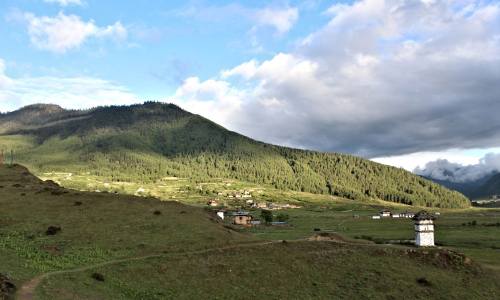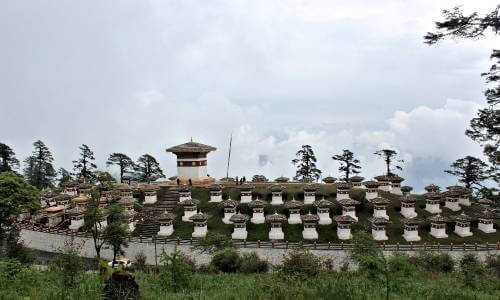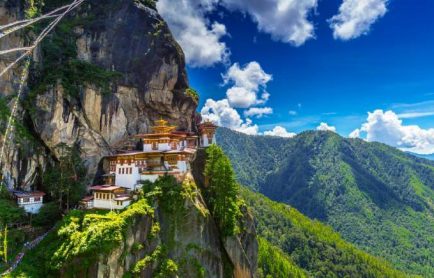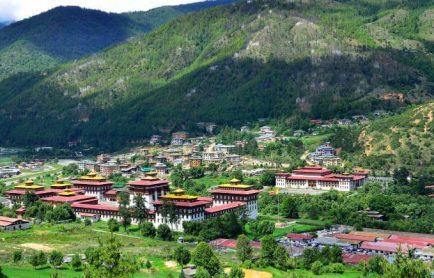Heritage in Bhutan
Bhutan is a country that boasts unmatched heritage. The country delineates major influence of Buddhism in its culture, lifestyle, art, and history making this small country in Asia stand out as a heritage tourism destination amongst the others. Bhutan flaunts picturesque towns and cities that are adorned with Tibetan tradition of Buddhist architecture of which the Dzongs (fortresses) and Chhortens are the finest examples of its architectural heritage. The country also boasts opulent natural heritage with 71% forest cover and being home to rare animal species like snow leopard, red panda, and takin. Bhutan is one of the exceptional few countries in the world that has well-preserved its age-old culture and traditions in perfect harmony with the process of modernization. The people are extremely cordial and leave a mark with their warm hospitality and the festivals here emanate the rich cultural heritage. Truly with its flavoursome and myriad heritage places to visit, Bhutan can draw people from near and far.
Architecture in Bhutan
The key element that lends the Bhutanese culture its uniqueness is its impressive architecture, characterized by slanted roofs, petite windows and vibrant coloured wooden doors, all of which sit through in a uniform pattern across the kingdom. This unity in construction and design is a wonder in itself and lends the already scenic landscape a breathtaking picturesque splendour. What further adds to the uniqueness of architecture in Bhutan is the no use policy of iron nails and bars. Ancient dzongs, which have been standing tall since the 17th century, are true architectural marvels and a classic example of such brilliant craftsmanship.
- Trongsa Dzong, Trongsa: Dubbed the largest fort in Bhutan, Trongsa Dzong was first built in 1543 by the Drukpa lama, Nagi Wangchuk, son of Ngawang Chhojey. In 1647, Shabdrung Ngawang Namgyal constructed the first dzong to replace it, which was called Chökhor Rabtentse Dzong with a shorter version of Choetse Dzong. The Dzong consists a maze of courtyards, corridors and as many as 25 temples. The fort was the seat of Wangchuk Dynasty.
- Kyichu Lhakhang, Paro: One of the oldest temples in Bhutan, Kyichu Lhakhang was built in the 7th century by the Tibetan Emperor Songtsen Gampo as one of the 108 border taming temples. In the 8th century the lhkhang was visited by Guru Padmasambhava. Ever since the queen of Jigme Dorji Wangchuk built a Guru Temple here, the annual rites of great accomplishment for the deities Vajrasattva, Palchen Heruka, and Vajrakilaya are being held in this temple for the well being of the country.
Heritage Cultural Festivals in Bhutan
Yet another integral part of the magnificent Bhutanese culture is its colourful and vibrant festivals. If you are someone seeking a cultural trip to Bhutan, plan your holidays around some of its significant annual festivals such as Paro Tshechu, Jambey Lhakhang Drup and Haa Summer Festival. Vibrant traditional attires, masked dance performances and Buddhist tantric rituals are the major highlights of these festivities. They provide a valuable insight into local customs, traditions and the country’s rich Buddhist folklore.
- Paro Tshechu, Paro: One of the biggest festivals in Bhutan, Paro Tshechu is a 5-day festival held in the spring months of March and April. The festival is being celebrated since the 17th century and it offers a great opportunity to witness the rich culture and heritage of Bhutan. On the first day of the festival, all the masked dances are performed and on the last they unfurling of a giant thongdrol (large painting) is done.
- Thimphu Tshechu, Thimphu: Held in the capital city, Thimphu, this religious festival in Bhutan is a 3-day event in which mask dances like Guru Tshengye (Eight Manifestations of Guru Rinpoche) and Shaw Shachi (Dance of the Stags) are performed. Continous prayers are also offered in order to invoke the gods and thousands of devotees throng to become the part of this one of the biggest festivals in Bhutan.
Food in Bhutan
No cultural expedition to Bhutan is complete without indulging in its unique and delectable dishes. One of the must try traditional delicacies is the highly popular and national dish, ‘Ema Datshi’. Translating to chilies and cheese, it is indeed lavishly spiced and finds its place on every menu card across the country. There are many pork and chicken dishes that are an innate part of locals’ food habits. There is also a locally prepared alcholic brew called Ara, which has been the part of the country’s rich culture.
- Ema Datshi: Dubbed the national dish of Bhutan, Ema Datshi is known for its distinct flavour and a unique combination of chillies and cheese served as a main dish with Red Rice. There is an ubiquitous saying that if you haven’t tasted Ema Datshi in Bhutan, you haven’t really been to the country.
- Ara: A fermented drink made from rice, maize, millet, or wheat, Ara is an alcoholic drink prepared by the locals. Strong in taste, this drink is sometimes also served to guests along with traditional food.
Natural Heritage in Bhutan
A heritage tour in Bhutan is incomplete without exploring its spectacular natural heritage. Having remained in isolation from the rest of the world while living in complete harmony with the environment for the past many centuries, Bhutan has managed to preserve its bounty of natural treasures that comprise of several wildlife reserves, national parks and protected zones. These natural habitats are home to a diverse flora, fauna and avifauna, and you would be surprised to find some of the globally endangered species like Black-Necked Cranes, White-Bellied Herons, Golden Langurs and Red Pandas thriving amazingly well and protected amidst the country’s dense thickets.
